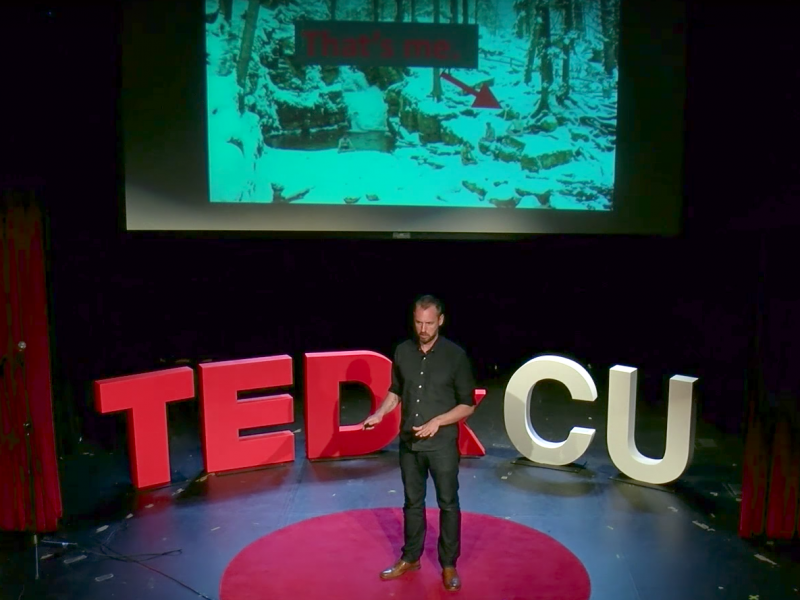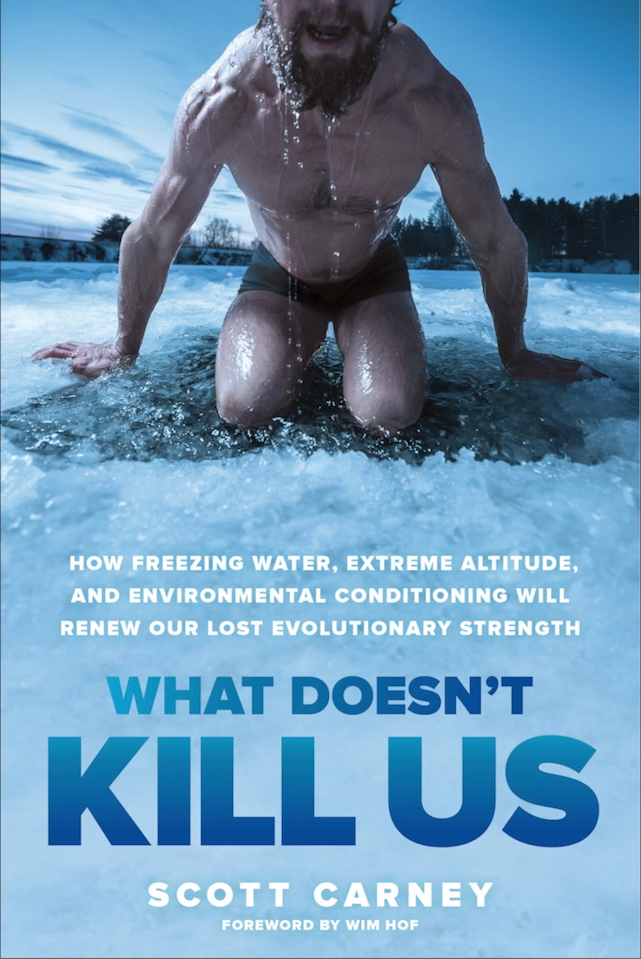If you’re trying to get in shape, you wouldn’t favor sitting on the couch over getting your heart rate up – even though it’s easier. And you wouldn’t subsist solely on french fries and ice cream – even though they might taste better than veggies.
For similar reasons, a growing movement in fitness suggests you shouldn’t surround yourself only with comfortable environments, existing permanently in a pleasant 72-degree bubble.
Scott Carney, author of “What Doesn’t Kill Us: How Freezing Water, Extreme Altitude, and Environmental Conditioning Will Renew Our Lost Evolutionary Strength,” recently gave a TEDx talk at the University of Colorado in Boulder. In it, he suggested that it may not be healthy to spend so much of our lives in a climate-controlled world, sitting in air conditioning in the summer and cranking the heat in winter.
Carney argues that by remaining too comfortable, we may be neglecting an essential part of fitness and making ourselves weak. Fortunately, he said it doesn’t take a huge time investment to start incorporating “environmental conditioning” into your routine – though it will require exposing yourself to some shockingly cold temperatures.
Why expose yourself to extreme temperatures?
As Homo sapiens spread around the globe, our ancestors endured crippling cold and searing heat, all without modern technology.
"Our most valuable asset in all of this has been our body," Carney said. "It doesn't matter whether it's a snowstorm or a scorching sun, our bodies had to adapt quickly."
Because of this, Carney argues that our bodies might need environmental stress - like exposure to a wide range of temperatures - if we're to reach our full potential. Without engaging the parts of our circulatory systems that help us cope with extreme heat and cold, Carney says, we weaken those mechanisms. And that loss could potentially play a role in cardiovascular illness.

To test this hypothesis, Carney tried an environmental exposure training program designed by Wim Hof, a Dutch fitness guru who goes by the nickname "Iceman."
The regimen involves conscious breathing and exposing yourself to freezing cold temperatures. And Carney claims it helped him unlock some impressive fitness gains. Tests at the CU Sports Medicine and Performance Center showed that his metabolism switched from primarily burning carbohydrates to burning more fat - a feat the CU athletic performance experts said was equal to adding about seven hours of cardio exercise per week.
This is anecdotal evidence based on one person, not a controlled scientific trial, so it's possible that Carney's body responded more dramatically than another person's might, or that something else contributed to the gains. But limited research does back up the potential of the environmental exposure approach.
Studies have found that a combination of cold exposure and learned breathing techniques can help people gain a limited amount of control over their immune system, which was previously thought to be completely involuntary. Promising data also suggests that cold exposure could help people lose weight and could counteract some effects of type 2 diabetes.
Embrace the cold - and learn to breathe
If you're interested in trying an experiment like Carney's at home, he says learning to be comfortable in the cold is the key. Hof argues that by learning to control our response to the cold, we can train our bodies to better cope with physical stress, thereby strengthening our circulatory system in ways that might affect cardiovascular health and help people gain some control over their immune systems.
But it's not easy.
"You can start with a cold shower - and I know this is the hardest thing that a human can do," Carney said.
You'll initially feel a shock, he said, as your nerves fire in the cold and tell your body to clench up. But you should to try to relax to coax your body into burning fat to keep warm.
"Instead of clenching up and heating yourself up with your muscles, let your metabolism do that job, and it will just do that automatically," he said in the TEDx talk.
Along with cold exposure, Carney practiced Hof's breathing method daily (and continues to do so). The technique involves taking approximately 30 quick breaths, then exhaling and keeping your lungs empty as long as possible. When you are gasping for air, take in a quick breath and hold it for 10 to 15 seconds. Then repeat this cycle three or four times. Carney said he's learned to hold his breath for up to three minutes at a time. (Don't use this method for swimming, though, as there's some risk of passing out.)
In addition to cold showers, or dips into cold lakes or rivers, Carney suggests that this theory supports the practice of purposefully exposing your body to different weather conditions. To train this way, he recommends turning down your thermostat in winter and going without AC in summer - and training your body to adapt and get comfortable with that discomfort (other research suggests this trains your mind too).
"Our bodies know what to do with environmental stimulus, we just have to let them," said Carney.
Here's his full TEDx talk:

